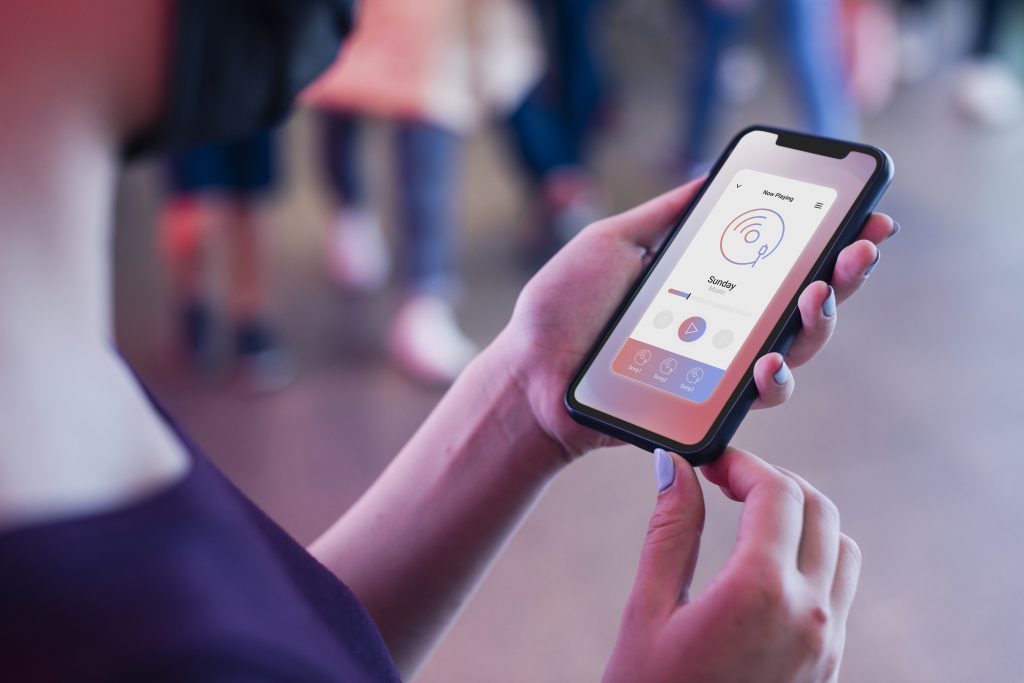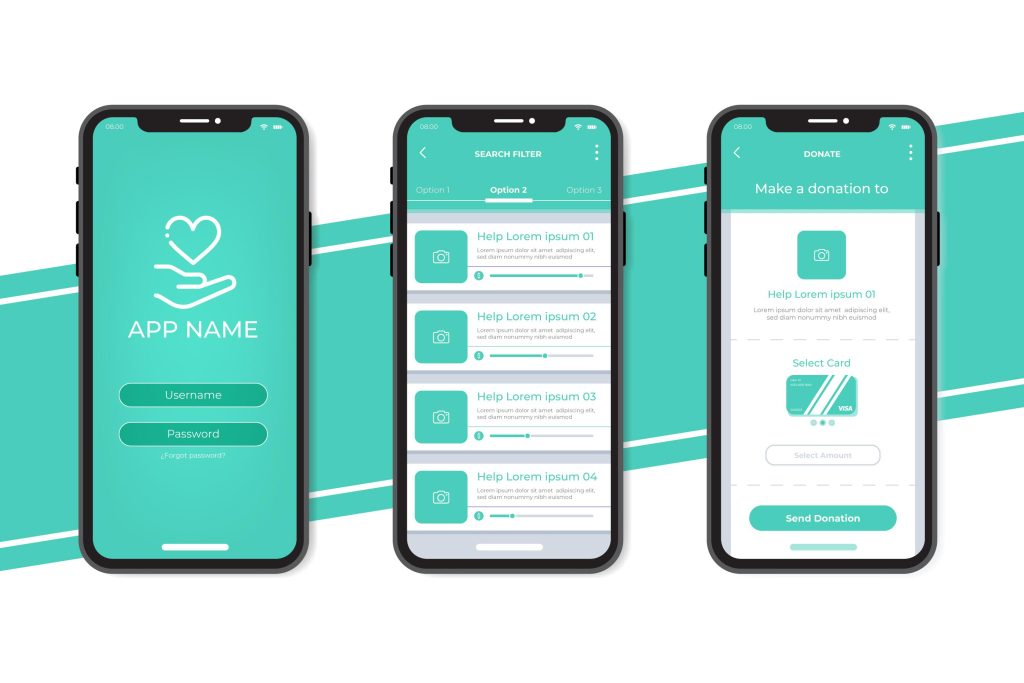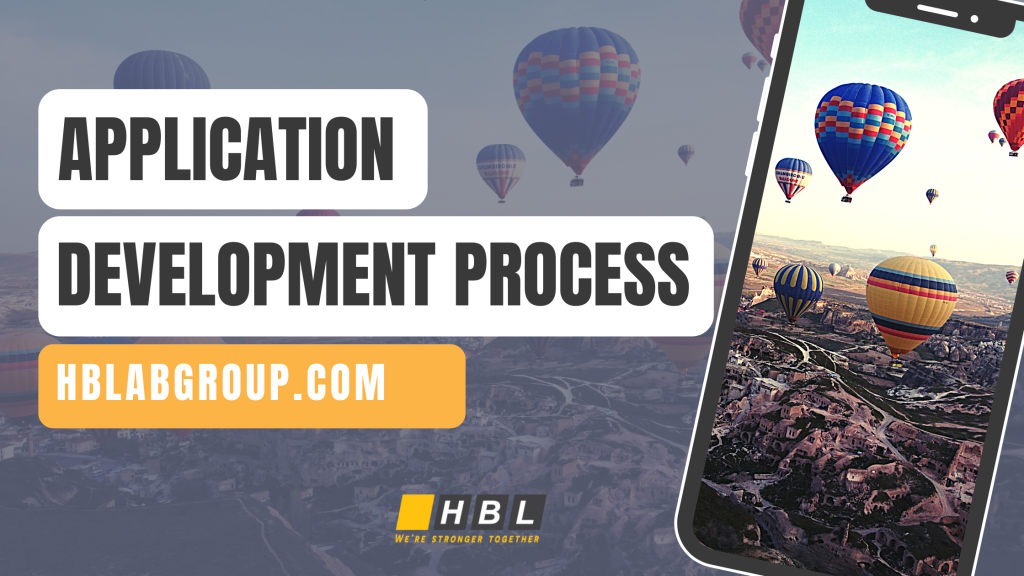The application development process requires many professionals and it is complicated, but success is not out-of-reach if the app is created by a tested and refined process. Over 7 years of software development with over 200 projects delivered, HBLAB has been following the process strictly to ensure the best quality for our customers.
In this blog, we will go in-depth about 6 vital steps of the application development process, starting from the idea and ending up with the final products!

1. Definition and analysis of requirements
In the beginning, we need to gather all the requirements and divide them into functional and non-functional ones. To complete this task, the project manager needs to talk to you – the client, perform research, and capture the idea of what the application should look like, whom it serves, and which are the basic functions the clients want. The results of this step are called the Specification document.
2. Design – the big step of Application Development Process
There are many elements in the design process, and they combine to form the user interface, which is how the user sees the website (UI design). But the visual itself is not enough, but the team needs to know about user flow, and the interface structure, in order to make the way people navigate and interact with the website, is as easy as possible (UX design).
2.1 Architecture & Workflows
The early stages of mobile app development influence how the app uses various data, such as the one displayed to users, the data it collects, user interactions with the end product, and user journeys within the app.
Users are granted set roles, rights, or rules important to the information architecture of a mobile app as it is being developed. Workflow diagrams aid in the identification of all possible user interactions inside the app’s navigation hierarchy.
2.2 Wireframes
Wireframes are like the first sketch of an application. During this step of the application development process, the wireframes help in showing the concepts, layout and define visual structure rather than showing the color or style of the app.
2.3 Style guides
Style guides specify all regulations needed to follow through the mobile app development process, and it consists of font-family, color scheme, and brand requirements. By following this guide, you may maintain the consistency of appearance.
2.4 Mockups
Based on the approved wireframe, the UI and UX designers will craft the design element, define the user flow and get to know the element hierarchy, etc… In this step, we will create a detailed, intuitive mock-up so that the developer will really understand the application and turn it into a usable, right product.
You can create mockups by including your style guide in the wireframes of your project. Your information architecture, workflow, and aesthetics will be changed after you finish the app design. To create high-fidelity mockups for your mobile app development process, you can utilize Adobe Photoshop, the most widely used application.

2.5 Prototype
Mockups are static designs that can be used to demonstrate the functionality of your mobile app. Prototypes imitate the app’s user experience and workflow as it will be in the final version. While prototyping takes time, it is worthwhile since it allows you to exhibit the design and functionality of your app at an early stage. Prototypes can help you spot changes to the app’s recommended functionality during the development phase.
When the functional aspects of an app aren’t thoroughly thought out, some companies choose to construct prototypes during the wireframing stage. They also do this while designing mobile apps to examine the app’s planned functionality with a focus group.
3. Development/ Coding
The development stage is where you start writing the code for the app’s “final” version. This is when you apply the input from the wireframes to make some final, perhaps significant decisions.
Because coding is the foundation of the entire process, it normally takes the longest. The development team adheres to the software requirements in order to create a product that meets the expectations of the stakeholders. The development stage should not be difficult if the preceding stages were completed completely and the circumstances were clear.
3.1 Back-End/ Server
This section of mobile app development provides all of the app’s capabilities, as well as the necessary database and server-side objects. It is often possible to implement the desired mobile capabilities by modifying an existing back-end platform.
3.2 API
In the mobile app development process, the API (Application Programming Interface) is the mediator that guarantees communication between the app and a back-end server/database.
3.3 Front-End
In the development stage of mobile apps, this is the native mobile app that an end-user uses. Mobile apps typically consist of interactive user experiences that employ an API and a data management back-end. In exceptional cases, the program can use local data storage to allow users to function without access to the internet.
4. Testing
Testing should, ideally, take place concurrently with the development stage. To keep post-release expenditures low, it’s critical to test often. Unit tests, user interface tests, and integration testing are all required to catch any severe errors or oversights as soon as possible. Test cases might add time to the development process, but they can drastically cut the time and money spent on maintenance and support in the long term.
In the same way that uses cases drive mobile app development, test cases drive mobile app testing. Test cases comprise test procedures, software quality evaluations with documented findings, and re-testing with corrections tracked.
4.1 User Experience Testing
The final app must be consistent with the user experience created by the app design team, which is a critical stage in mobile app testing and development. Make that your program follows the original design principles and uses consistent fonts, style treatments, color palette, data padding, icon design, and navigation.
Application Development Process
4.2 Functional Testing
It’s critical to guarantee that your mobile app’s accuracy aspect contributes to its success. As a result, in order to cover as many testing scenarios as possible, the app’s functionality should be evaluated by as many users as possible.
The purpose of functional testing in the mobile app development process is to ensure that users can utilize the app’s features and functions without difficulty.
If you create a mobile platform app for iOS and Android, the comparison between features of both versions of your mobile app should be included in your functional testing.
4.3 Performance Testing
How well does your software respond to user requests? What is the average time it takes for an app screen to load? Is your app, as a result of the mobile app development process, larger than it should be?
Even if your app complies with basic performance requirements, you should load test the application, API, and backend by simulating the maximum number of concurrent users. Even during periods of high usage, your application should be able to properly manage the load.
4.4 Security Testing
The importance of security incorporating mobile app development cannot be overstated. Any flaw might lead to a hack.
If a user remains inactive for an extended length of time, the system should terminate their sessions (typically ten mins or less on a mobile app). If your app stores user credentials on the device to simply rejoin it, you must ensure that you choose a trustworthy provider when designing a mobile app. Data entry forms inside your mobile app should be properly vetted to ensure there is no data leaking.
4.5 Device and Platform Testing
Every 12 months, new mobile devices with fresh hardware, software, and design are introduced to the market. Mobile operating systems are also upgraded every few months. The gadgets come in a variety of sizes and shapes.
However, your mobile app must be thoroughly tested on a variety of mobile devices and emulators to ensure that it runs well for all users.
Testing is critical to an app’s future success and is an important aspect of the whole mobile app development process. To deliver a high-quality mobile app, you’ll need to use a complete mobile testing strategy.
5. Deployment and acceptance
It’s time when you submit your software for approval to the App Store or Play Store. This is an important technique to learn since you will be doing it every time you release a new version of the app. You should have ironed out most of the significant defects reported by your testers at this stage in the development process, and you should have a quality app that meets the standards for the store where you’ll be posting it. You’ll be assessing customer comments, maybe adding new features, and then re-releasing the app.
6. Maintenance
This stage should start at the same time as the release and go in the same direction. Maintenance is the process of checking on the state of your program, fixing any errors that may have appeared, and ensuring that it continues to function properly. Updating your app to support new devices or new versions of the OS is also part of maintenance.
Your app’s ongoing maintenance is never complete. You will be keeping your software eternally until you decide to stop supporting it (possibly abandoning your users).
Wrapping Up
To provide a quality product that meets the demands of the user, the application development process is required.
At HBLAB, we strive to make each development stage as efficient as possible while keeping the business in mind. With 7 years of expertise designing products for early-stage businesses, we know how to take your idea from concept to fully realized business needs.
Contact us to talk about your concept and embark on a new adventure together.

